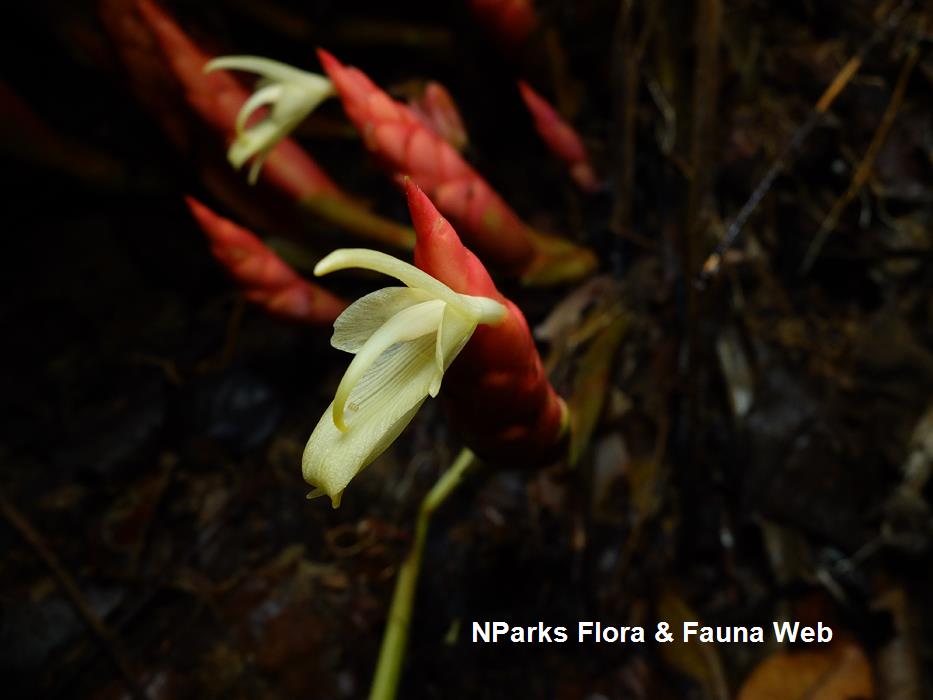
Back
Zingiber puberulum Ridl. var. puberulum
| Family Name: | Zingiberaceae |
| Synonyms: | Zingiber puberulum var. ovoideum auct. non Holttum |
Name
Classifications and Characteristics
| Plant Division | Angiosperms (Flowering Seed Plants) (Monocotyledon) |
|---|---|
| Plant Growth Form | Herbaceous Plant |
| Lifespan (in Singapore) | Perennial |
| Mode of Nutrition | Autotrophic |
| Maximum Height | 3 m |
Biogeography
| Native Distribution | Peninsular Malaysia and Singapore |
|---|---|
| Native Habitat | Terrestrial (Primary Rainforest, Secondary Rainforest) |
| Preferred Climate Zone | Tropical |
| Local Conservation Status | Native to Singapore (Endangered (EN)) |
Description and Ethnobotany
| Growth Form | It is a herb that grows up to 3 m tall from underground rhizomes. |
|---|---|
| Foliage | Its stalkless leaves have leaf blades that are evenly oval, 25-40 by 5-8 cm, and covered with hair below. Its ligules (thin outgrowths at the junction of the leaf and leaf stalk) are about 3-6 mm long. |
| Flowers | Its white to cream flowers grow on flowering shoots that are up to 20 cm long. The flower’s lip is cream to yellowish. |
| Fruit | Its white fruits are 2-2.5 cm long. Its black seeds are 7 mm long, and covered mostly with white pulp. |
| Habitat | It grows in forests. |
| Associated Fauna | Its flowers are pollinated by birds. |
| Taxonomy | Previous name of Zingiber puberulum var. ovoideum auct. non Holttum was misused in Singapore. Current name of Zingiber puberulum Ridl. var. puberulum is applicable to wild plants in Singapore but not necessarily to wild plants elsewhere or to cultivated plants originating elsewhere. |
| Cultivation | It can be propagated from seed or division of the rhizome. |
| Etymology | 'Zingiber' is Latin for ginger, while 'puberulus' means downy and soft in Latin, referring to the hairs on the plant. |
Landscaping Features
| Landscaping | It may be suitable for parks, in shaded to partially shaded areas. |
|---|---|
| Desirable Plant Features | Ornamental Flowers |
| Landscape Uses | Parks & Gardens, Small Gardens |
Fauna, Pollination and Dispersal
| Fauna Pollination Dispersal Associated Fauna | Bird-Attracting |
|---|---|
| Pollination Method(s) | Biotic (Fauna) |
| Seed or Spore Dispersal | Biotic (Fauna) |
Plant Care and Propagation
| Light Preference | Semi-Shade |
|---|---|
| Water Preference | Moderate Water |
| Rootzone Tolerance | Moist Soils, Well-Drained Soils, Fertile Loamy Soils |
| Propagation Method | Seed, Division |
Foliar
| Foliage Retention | Evergreen |
|---|---|
| Mature Foliage Colour(s) | Green |
| Mature Foliage Texture(s) | Hairy / Hirsute |
| Foliar Type | Simple / Unifoliate |
| Foliar Arrangement Along Stem | Rosulate / Rosette |
| Foliar Attachment to Stem | Sessile |
| Foliar Shape(s) | Non-Palm Foliage (Lanceolate) |
| Foliar Venation | Parallel |
| Foliar Margin | Entire |
| Leaf Area Index (LAI) for Green Plot Ratio | 3.5 (Shrub & Groundcover - Monocot) |
Floral (Angiosperm)
| Flower & Plant Sexuality | Bisexual Flowers |
| Flower Colour(s) | Red, Cream / Off-White, White |
|---|---|
| Flower Grouping | Cluster / Inflorescence |
Fruit, Seed and Spore
| Mature Fruit Colour(s) | White |
|---|---|
| Fruit Classification | Simple Fruit |
| Fruit Type | Fleshy Fruit , Non-Accessory Fruit |
Image Repository
Others
| Master ID | 1281 |
|---|---|
| Species ID | 2574 |
| Flora Disclaimer | The information in this website has been compiled from reliable sources, such as reference works on medicinal plants. It is not a substitute for medical advice or treatment and NParks does not purport to provide any medical advice. Readers should always consult his/her physician before using or consuming a plant for medicinal purposes. |

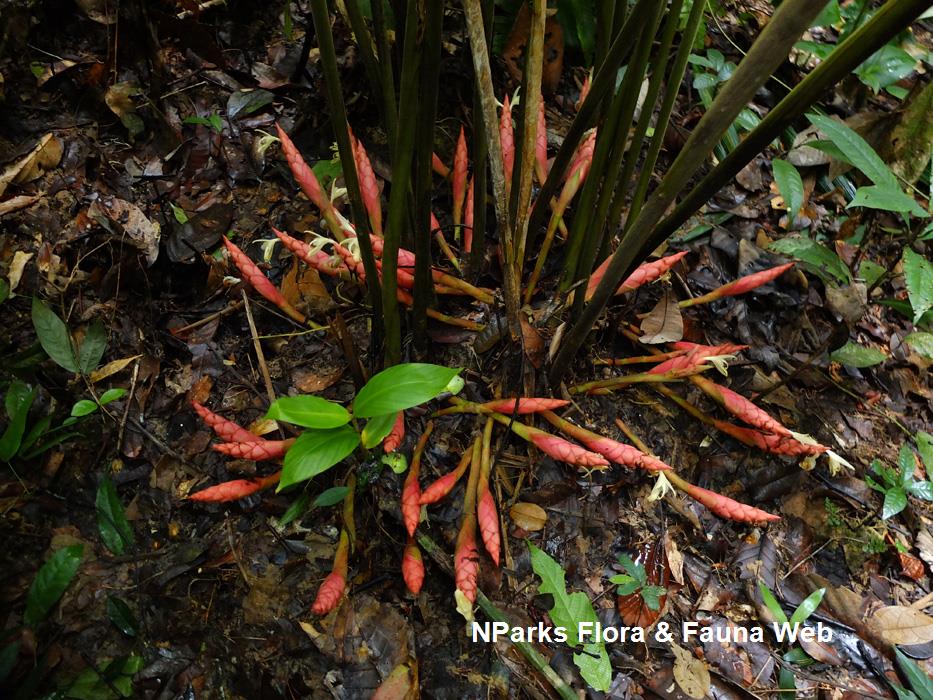
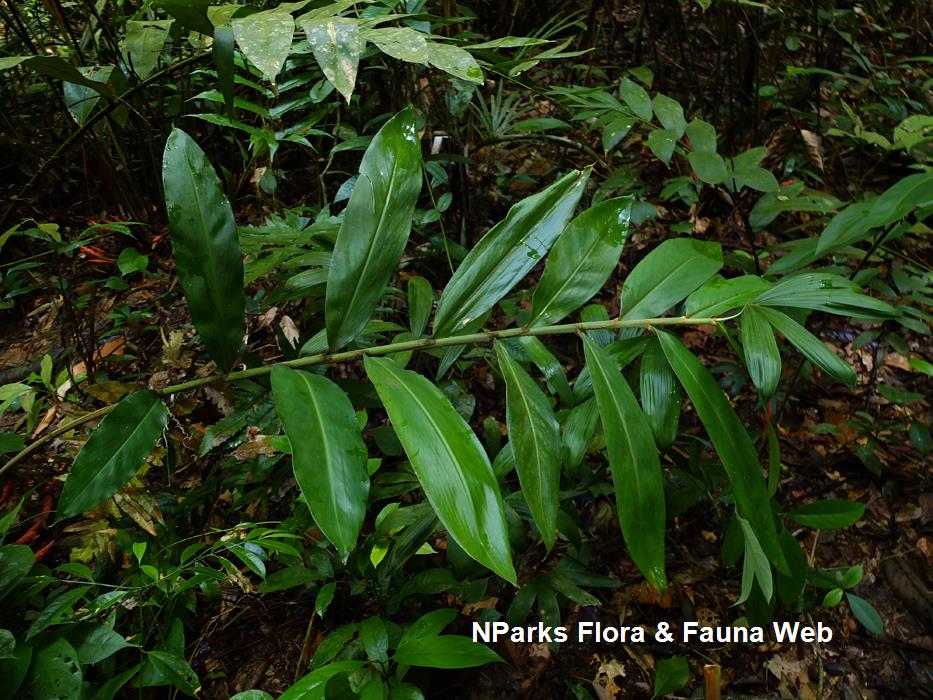
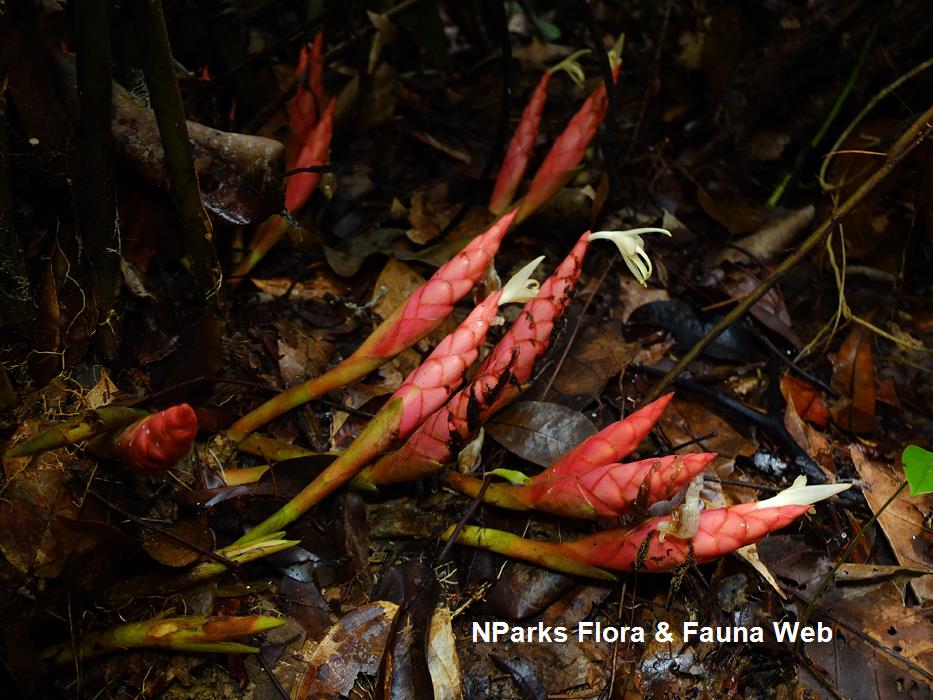
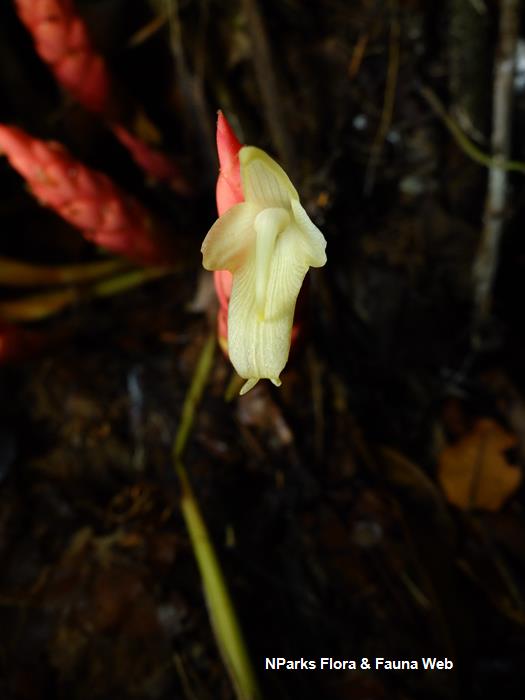
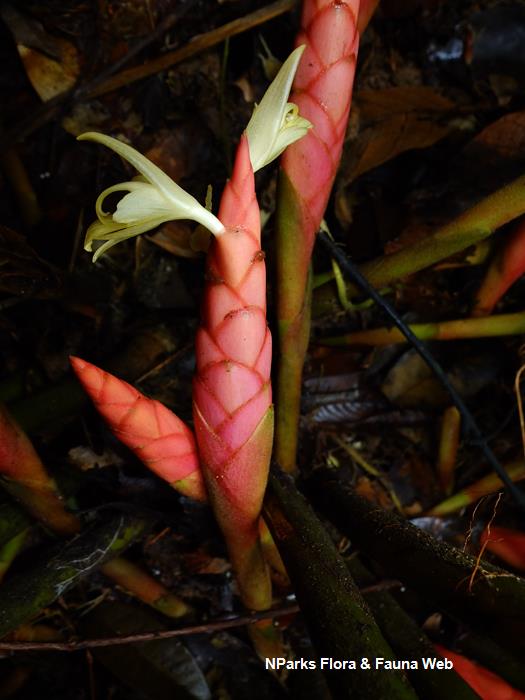
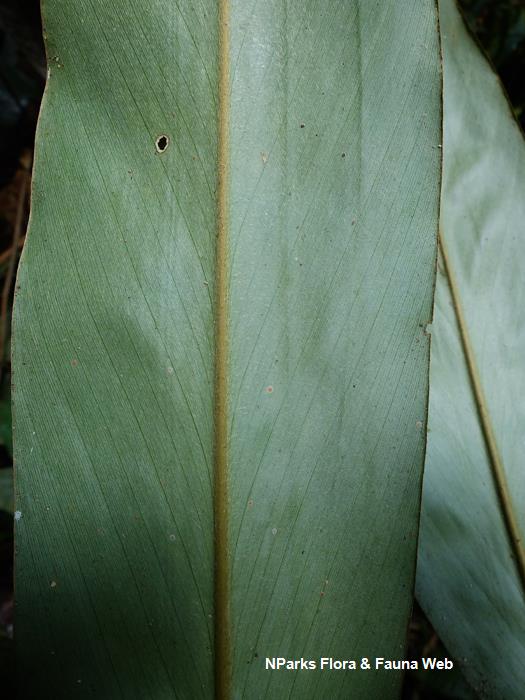
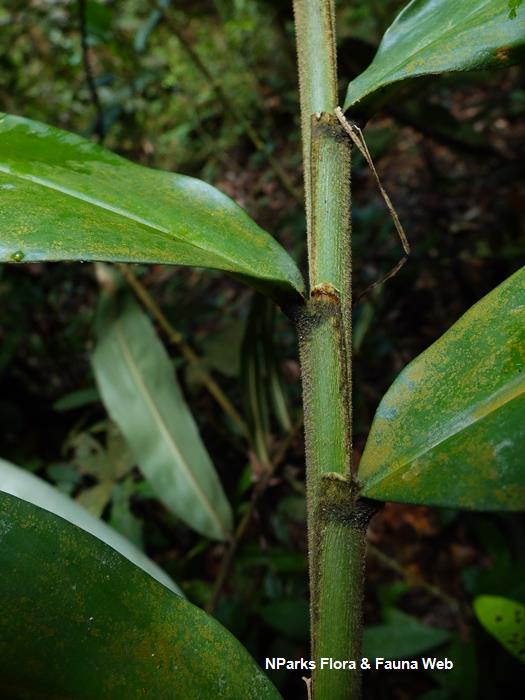
_lowres.jpg)
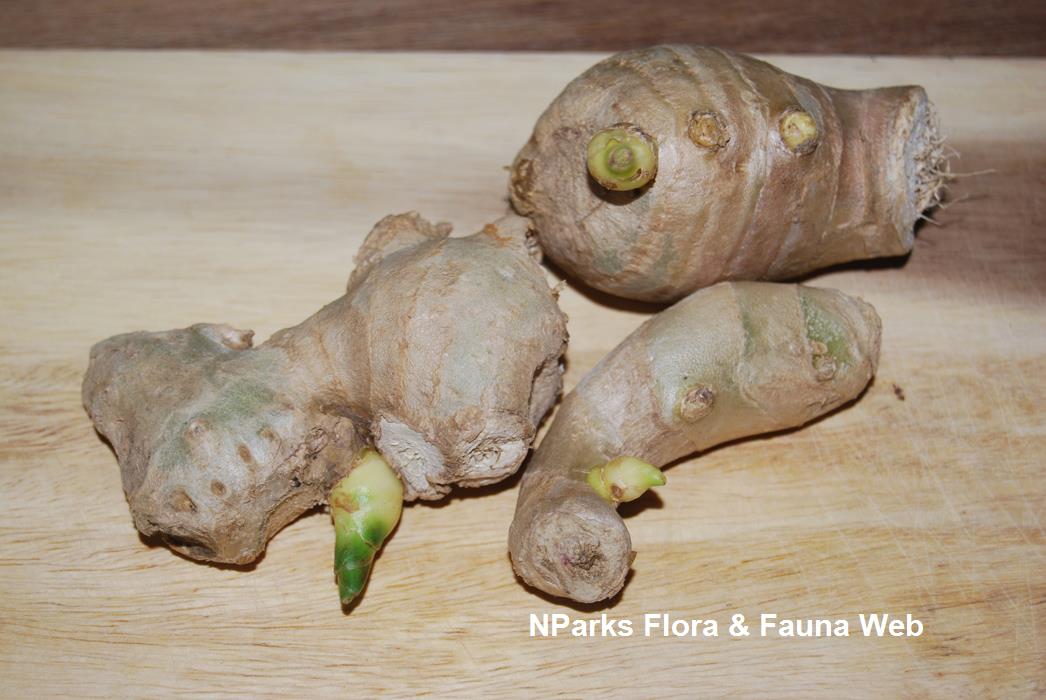
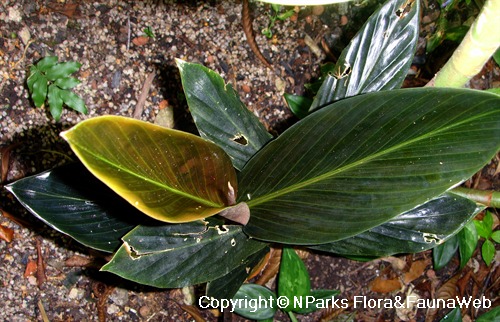
.jpg)